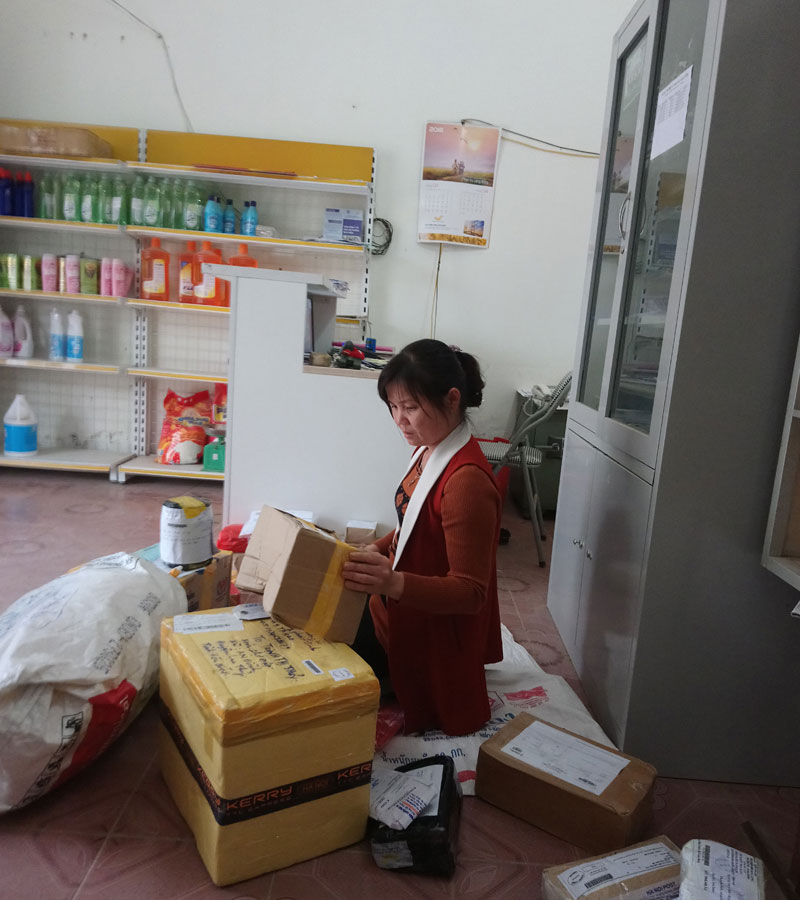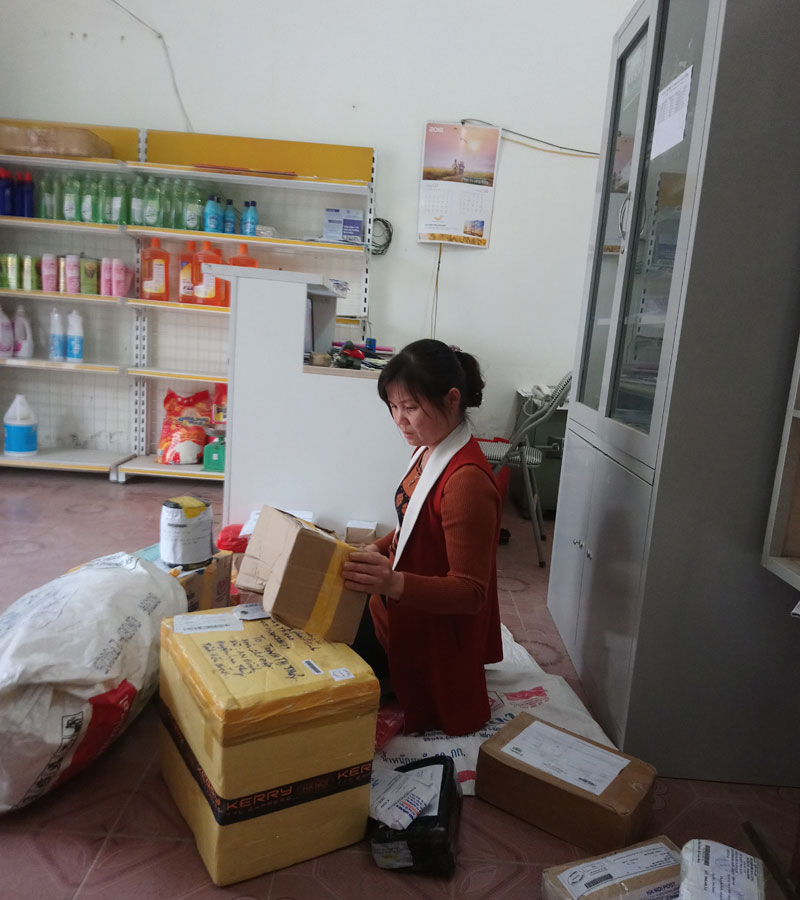



Ms. Nguyen Thi Hue, staff of An Binh Commune Post office (Lac Thuy) arranged books, newspapers and postal items before delivery.
Although there is a long time, the CPO in Lac Thuy district could not fulfill its mission because the post office was always in a quiet state. It is necessary to recover activities of CPO, Lac Thuy District Post Office has taken action positively and has succeeded soon.
In order to complete the political tasks, the plan of production and business, Lac Thuy District post office has developed the mechanism of contracting the plan for CPO, promoting the sale and development of postal services, especially online sales service (which depends on the strength of each commune), arranging mails and deliveries at the point of delivery on the mail route to save costs and save the mail in the day. The CPOs start operating from the first day of the year and register their monthly schedule according to local customs, group CPOs in each adjacent commune to support each other during the week and the month. Along with the training, instruction on the skills and operations in the period, the District Post Office always attached importance to mobilizing and creating favorable conditions for the staffs of the CPOs to self – study to improve their business knowledge and skills and computer skills to meet the requirements of firm in duties, good at business.
In the process of reorganizing the activities of the CPOs, Lac Thuy district post office attaches great importance to improving the quality of serving public-utility services in communes, ensuring book services, legal bookcases, pensions and social security, and from 2017, electricity bills in the commune are being done at CPOs.
In order to improve the quality of deliveries at the CPOs, the District Post Office regularly checks and urges to ensure the delivery according to regulations, especially the public services and newspapers for prestigious people in the commune. It must ensure that 100% of communes have daily newspapers and no mails or postal items are kept to the next day. Last year, the District Post Office signed a cooperation agreement with the Statistics Board, the Women's Union and the District Public Administrative Center to deliver administrative procedures. At the same time, many emulation movements were organized to promote the production and business activities, focusing on improving the quality of postal services. These movements are aimed to increase the awareness of laborers about the quality of service, meeting the increasing demands of customers. As a result, the quality of post delivery services has been improved to meet the prescribed norms, especially public postal services.
With the non- stop effort, the Lac Thuy District post office has put up a new face of the CPOs. As a result, in 2014, the revenue of Lac Thuy District Post Office reached 1,100 million dongs, but by 2017, it has achieved 4,371 million dongs (reaching 112% of the plan, increasing by 397% compared to 2014).